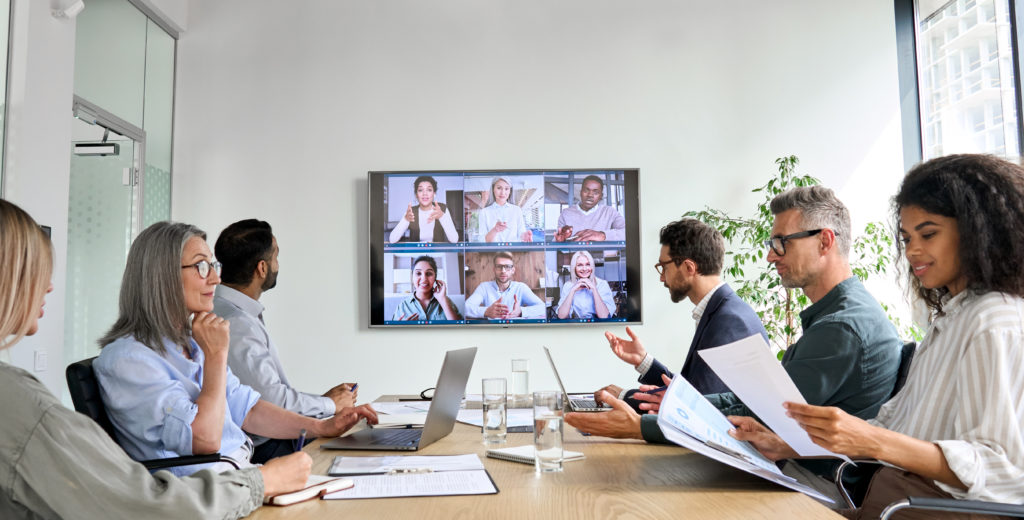Meetings and debriefs are absolutely crucial to every team in their product or service delivery, no matter if you are a small business, remote/hybrid team, or span as broadly as public sector. Effective meeting debriefs are essential for reflecting on the outcomes, discussing key decisions and takeaways, and planning future actions.
By integrating design thinking into meeting debriefs, organizations can foster a culture of continuous improvement, adaptability, and innovation in their collaborative processes. This approach ensures that debriefs not only identify problems but also actively work towards effective and creative solutions.
Like design thinking, debriefs are deliberate structured processes, where both help to adapt in real-time to new incoming information to achieve better results and outcomes as you are working to create or redesign products or services. We’ll discuss some actionable ways design thinking practices can improve your debriefs for your next meeting.
Use An Agenda
Communicate to your team an idea or purpose of what you want to achieve through the meeting. Create an agenda that addresses what you are trying to accomplish from the meeting and share it with your team to ensure that participants are familiar with the agenda before the debrief begins. You may even consider establishing a consistent structure for debriefs to create a sense of routine and make the process more efficient as you host more regular debrief sessions.
Agendas should include all relevant objectives while accounting for time and space for others’ input. Much like any design thinking session, it is important to allocate time for each part of a meeting – including important project-specific topics, reviewing any data, time for asking questions, and concluding with priority-setting, assignment of tasks to team members, and next steps as you debrief. Agendas should mentally prepare team members to engage with the purpose of the meeting – whether it is to come to a decision, to inform each other of news or updates, or to facilitate collaboration.
Ask Questions to Understand Team Members
One of the greatest strengths of design thinking is that it gets to the root of people’s pain points while using a product or service. This gives you deep insight into how they are thinking and feeling while using it and can guide you on where to readjust or to reevaluate along the course of a project. An effective meeting debrief should give you the same kind of insight. In design thinking, the first phase – empathizing – involves becoming curious about your end-users while using your product or service. As a team leader, imagine your team are your end-users and ask them about their experience completing a task or their perspective on how they feel and objective was met.
Frame questions in a way that encourages specific, actionable feedback. Instead of asking, “Do you have any feedback?” try more targeted questions like, “What specific aspects of the project could be improved, and how?” During the meeting, ask the team questions about what is going well or what is not going well. Why were certain objectives not met? Are they lacking specific tools or data? Is there something making the completion of an objective difficult? Tune into their challenges, but also take note of what has been working well.
Stay Positive
A common downfall of meeting debriefs is a negative atmosphere. Negative feedback or blame may create a defensive atmosphere, hindering open communication. Debriefs are an opportunity to foster a culture of continuous improvement where feedback is a natural part of the debrief process. Encourage team members to view feedback as a tool for growth and development.
Design thinking practices are innately inclusive. During the Ideation phase of design thinking, every idea that is offered during a brainstorming or ideation session is captured, no matter how wild it may seem. Address all ideas with positivity and expressing gratitude for the information shared.
Reiterate and collaborate
Based on feedback and observations from the test phase, iterate on the strategies. Continue refining the meeting debrief process over time, incorporating lessons learned from each iteration. Use a human-centered approach to these reiterations by consider the end-user experience when implementing changes. Did the long, remote meeting format work well for all participants? Or would shorter, in-person gatherings work better for you team? Continuously seek feedback from meeting participants to ensure that improvements align with their needs and preferences.
Especially in large organizations with complex projects, bringing together individuals with diverse skills and roles in the organization to contribute to the debrief process can generate a holistic understanding of meeting challenges and solutions. Collaboration between different functional areas enhances communication channels within an organization, breaks down silos and improves overall communication.
Remember, a successful debrief not only identifies what went well but also highlights areas for improvement, fostering a culture of continuous learning and refinement in the team’s collaborative processes. Great debriefs take practice. The more intentional debriefs you have, the better you’ll become over time and the more intuitively you can have meetings like a design thinker.
Do you want to sharpen your debrief skills? A suite of techniques you can learn to implement for more effective meeting debriefs are examined in length through Spring2 Innovation’s Design Thinking – Level 1 course.
_____
RELATED BLOGS
- Embracing Flexibility and Agility via Design Thinking
- Dynamic Mindset: The What, the Why, and the How
- Why Reframing the Problem with Research and Customer Insights is the Key to Innovation
If you are interested in how Spring2 Innovation can help your teams thrive, contact us for more information.
